Count Dracula is the title character and primary antagonist of Bram Stoker's 1897 Gothic horror novel Dracula. He is considered thus to be both the prototypical and the archetypical vampire in subsequent works of fiction. Some aspects of the character are believed to have been inspired by the 15th-century Romanian general and Wallachian Prince Vlad III the Impaler, who was also known as Dracula. Other character aspects have been added or altered in subsequent popular media fictional works. The character has subsequently appeared frequently in popular culture, from films to animated media to breakfast cereals.
Stoker’s creation
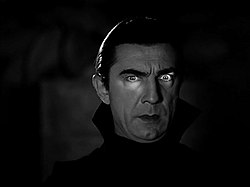
Bram Stoker's novel takes the form of an epistolary tale, in which Count Dracula's characteristics, powers, abilities and weaknesses are narrated by multiple narrators, from different perspectives.
Count Dracula is a centuries-old vampire, and Transylvanian nobleman, who claims to be a Székely descended from Attila the Hun. He inhabits a decaying castle in the Carpathian Mountains near the Borgo Pass. Unlike the vampires of Eastern European folklore, which are portrayed as repulsive, corpse-like creatures, Dracula exudes a veneer of aristocratic charm. In his conversations with Jonathan Harker, he reveals himself as deeply proud of his boyar heritage and nostalgic for the past times, which he admits have become only a memory of heroism, honor and valor in modern times.
Details of his early life are obscure, but it seems that Dracula studied the black arts at the academy of Scholomance in the Carpathian Mountains, overlooking the town of Sibiu (also known as Hermannstadt) and became proficient in alchemy and magic. Taking up arms, as befitting his rank and status as a voivode, he led troops against the Turks across the Danube. According to Van Helsing, "He must indeed have been that Voivode Dracula who won his name against the Turk, over the great river on the very frontier of Turkey-land. If it be so, then was he no common man: for in that time, and for centuries after, he was spoken of as the cleverest and the most cunning, as well as the bravest of the sons of the land beyond the forest." Dead and buried in a great tomb in the chapel of his castle, Dracula returns from death as a vampire and lives for several centuries in his castle with three terrifyingly beautiful female vampires beside him. Whether they be his lovers, sisters, daughters, or vampires made by him is not made clear in the narrative.
As the novel begins in the late 19th century, Dracula acts on a long contemplated plan for world domination, and infiltrates London to begin his reign of terror. He summons Jonathan Harker, a newly qualified English solicitor, to provide legal support for a real estate transaction overseen by Harker's employer. Dracula at first charms Harker with his cordiality and historical knowledge, and even rescues him from the clutches of the three female vampires in the castle. In truth, however, Dracula wishes to keep Harker alive long enough to complete the legal transaction and to learn as much as possible about England.
Dracula leaves his castle and boards a Russian ship, the Demeter, taking along with him boxes of Transylvanian soil, which he needs in order to regain his strength. During the voyage to Whitby, a coastal town in northern England, he sustains himself on the ship's crew members. Only one body is later found, that of the captain, who is found tied up to the ship's helm. The captain's log is recovered and tells of strange events that had taken place during the ship's journey. Dracula leaves the ship in the form of a dog.
Soon the Count is menacing Harker's fiancée, Wilhelmina "Mina" Murray, and her friend, Lucy Westenra. There is also a notable link between Dracula and Renfield, a patient in an insane asylum overseen by John Seward compelled to consume insects, spiders, birds, and other creaturesâ€"in ascending order of sizeâ€"in order to absorb their "life force". Renfield acts as a kind of sensor, reacting to Dracula's proximity and supplying clues accordingly. Dracula begins to visit Lucy's bed chamber on a nightly basis, draining her of blood while simultaneously infecting her with the curse of vampirism. Not knowing the cause for Lucy's deterioration, her three suitors call upon John Seward's mentor, the Dutch doctor Abraham Van Helsing. Van Helsing soon deduces her condition's supernatural origins, but does not speak out. Despite an attempt at keeping the vampire at bay with garlic, Dracula attacks Lucy's house one final time, leaving her mother dead and transforming Lucy herself into one of the undead.
After Lucy attacks several children, Van Helsing and Lucy's former suitors John Seward, Arthur Holmwood and Quincey Morris enter her crypt and kill her to save her soul. Later, Harker joins them and they enter Dracula's residences at Carfax and Piccadilly, destroying his boxes of earth, depriving the Count of his ability to rest. Dracula leaves England to return to his homeland, but not before biting Mina, largely out of spite for the heroes for their actions against him knowing that as long as he's alive, Mina is in danger of becoming a vampire herself. However this backfires on him as Helsing hypnotizes Mina and uses the supernatural link between Dracula and her to track him down.
The final section of the novel details the heroes racing Dracula back to Transylvania, and in a climactic battle with Dracula's gypsy bodyguards, finally destroying him. Despite the popular image of Dracula having a stake driven through his heart to kill him, Mina's narrative describes his throat being cut through by Jonathan Harker's kukri and his heart pierced by Morris' Bowie knife (Mina Harker's Journal, 6 November, Dracula Chapter 27). His body then turns into dust, but not before Mina Harker sees an expression of peace on Dracula's face.
Characteristics
Although early in the novel Dracula dons a mask of cordiality, he often flies into fits of rage when his plans are interfered with. When the three vampire women who live in his castle attempt to seduce Jonathan Harker, Dracula physically assaults one and ferociously berates them for their insubordination. He then relents and talks to them more kindly, telling them that he does indeed love each of them.
Dracula is very passionate about his warrior heritage, emotionally proclaiming his pride to Harker on how the Székely people are infused with the blood of heroes. He does express an interest in the history of the British Empire, speaking admiringly of its people. He has a somewhat primal and predatory worldview; he pities ordinary humans for their revulsion to their darker impulses.
Though usually portrayed as having a strong Eastern European accent, the original novel only specifies that his spoken English is excellent, though strangely toned.
His appearance varies in age. He is described early in the novel as thin, with a long white mustache, pointed ears and sharp teeth. It is also noted later in the novel (Chapter 11 subsection "The Escaped Wolf") by a zookeeper that sees him that he has a hooked nose and a pointed beard with a streak of white in it. He is dressed all in black and has hair on his palms. Jonathan Harker described him as an old man, "cruel looking" and giving an effect of "extraordinary pallor". When angered, the Count showed his true bestial nature, his blue eyes flaming red.
I saw... Count Dracula... with red light of triumph in his eyes, and with a smile that Judas in hell might be proud of.
â€" Jonathan Harker's Journal, Dracula, Chapter 4
As the novel progresses, Dracula is described as taking on a more and more youthful appearance.
Powers and weaknesses
Count Dracula is portrayed in the novel using many different supernatural abilities. He has superhuman strength which, according to Van Helsing, is equivalent to that of 20 strong men. He is immune to conventional means of attack and can only be killed by decapitation preceded by impalement through the heart. The Count does not have to seek victims regularly, and has the ability to remain inactive for centuries. The Count can defy gravity to a certain extent and possesses superhuman agility; being able to climb upside down vertical surfaces in a reptilian manner. He has powerful hypnotic and telepathic abilities, and is also able to command nocturnal animals such as bats and rats. Dracula can also manipulate the weather, usually creating mists to hide his presence, but also storms such as in his voyage in the Demeter. He can travel onto "unhallowed" ground such as the graves of suicides and those of his victims. He can shapeshift at will, his featured forms in the novel being that of a bat, a wolf, a large dog and fog. He is able to pass through tiny cracks or crevices while retaining his human form, described by Van Helsing as the ability to become "so small". He also has the ability to vanish and reappear somewhere else. He requires no other sustenance but fresh blood, which has the effect of rejuvenating him.
According to Van Helsing:
The Nosferatu do not die like the bees when they sting once. He is only stronger, and being stronger, have yet more power to work evil.
One of Dracula's most mysterious powers is the ability to transfer his vampiric condition by biting others, who become the vampires after death. According to Van Helsing:
They cannot die, but must go on age after age adding new victims and multiplying the evils of the world. For all that die from the preying of the Un-dead become themselves Un-dead, and prey on their kind. And so the circle goes on ever widening, like as the ripples from a stone thrown in the water. Friend Arthur, if you had met that kiss which you know of before poor Lucy die, or again, last night when you open your arms to her, you would in time, when you had died, have become nosferatu, as they call it in Eastern europe, and would for all time make more of those Un-Deads that so have filled us with horror.
He slowly transforms Lucy into a vampire and, following her destruction, sets his sights on Mina. To punish Mina he forces her to drink his blood; this act gives him telepathic link to her thoughts, however this link is used against him, as Mina is able to predict his movements.
The sun that rose on our sorrow this morning guards us in its course. Until it sets to-night, that monster must retain whatever form he now has. He is confined within the limitations of his earthly envelope. He cannot melt into thin air nor disappear through cracks or chinks or crannies. If he go through a doorway, he must open the door like a mortal.
Dracula's powers are not unlimited, however. He is much less powerful in daylight and is only able to shift his form at dawn, noon, and dusk (he can shift freely at night). The sun is not fatal to him, though, as sunlight does not burn and destroy him upon contact.
He is repulsed by garlic, crucifixes, and sacramental bread, and he can only cross running water at low or high tide. He is also unable to enter a place unless invited to do so; once invited, however, he can approach and leave the premises at will.
While universally feared by the local people of Transylvania and even beyond, he somehow commands the loyalty of gypsies and a band of Slovaks who transport his boxes on their way to London and to serve as an armed convoy bringing his coffin back to the Castle. The Slovaks and gypsies appear to know his true nature, for they laugh at Jonathan Harker, who tries to communicate his plight, and betray Harker's attempt to send a letter through them by giving it to the Count.
Count Dracula is depicted as the "King Vampire", and can control other vampires who were his own victims but also, as per the story "Dracula's Guest", those in farther away lands such as Styria who may or may not have been Dracula's victims. His death can release the curse on any living victim of eventual transformation into vampire. But Van Helsing reveals that were he to successfully escape, his continued existence would ensure that even if he did not victimize Mina Harker further, she would transform into a vampire upon her eventual natural death.
He also requires Transylvanian soil to be nearby to him in order to successfully rest; otherwise, he will not be able to recover his strength. Dracula's powers and weaknesses vary greatly in the many adaptations. Previous and subsequent vampires from different legends have had similar vampire characteristics.
Character development subsequent to the novel
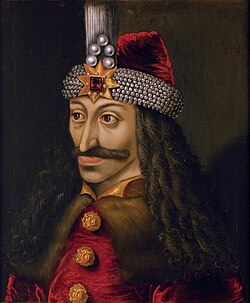
Dracula is arguably one of the most famous characters in popular culture. He has been portrayed by more actors in more visual media adaptations of the novel than any other horror character. Actors who have played him include Max Schreck, Béla Lugosi, John Carradine, Christopher Lee, Charles Macaulay, Francis Lederer, Denholm Elliott, Jack Palance, Louis Jourdan, Frank Langella, Klaus Kinski, Gary Oldman, Leslie Nielsen, George Hamilton, Keith-Lee Castle, Gerard Butler, Richard Roxburgh, Marc Warren, Rutger Hauer, Stephen Billington, Thomas Kretschmann, Dominic Purcell, and Luke Evans. Lon Chaney Jr. played either Dracula or his progeny in the Universal film, "Son of Dracula." Of all the foregoing, it is generally conceded that actor Bela Lugosi's stage and 1931 movie portrayal of Dracula has, in appearance, speech, public personality, mannerisms and dress, overshadowed Stoker's original conception of these character aspects.
The character is closely associated with the western cultural archetype of the vampire, and remains a popular Halloween costume.
Count Dracula appears in Mad Monster Party? voiced by Allen Swift. This version is shown to be wearing a monocle. Count Dracula is among the monsters that Baron Boris von Frankenstein invites to the Isle of Evil in order to show off the secret of total destruction and announce his retirement from the Worldwide Organization of Monsters.
In Sesame Street there is a character called Count von Count who was based on Bela Lugosi's interpretation of Count Dracula.
Count Dracula appears in Mad Mad Mad Monsters (a "prequel of sorts" to Mad Monster Party?) voiced again by Allen Swift. He and his son are invited by Baron Henry von Frankenstein to attend the wedding of Frankenstein's Monster and its mate at the Transylvania Astoria Hotel.
Dracula is the primary antagonist of the Castlevania video game series and the main protagonist of the Lords of Shadow reboot series.
In 2003, Count Dracula, as portrayed by Lugosi in the 1931 film, was named as the 33rd greatest movie villain by the American Film Institute.
Dracula appears as the lead character of Dracula the Un-dead, a novel by Stoker's great-grand nephew Dacre presented as a sequel to the original. Set twenty-five years after the original novel, Dracula has gone to Paris as an actor with the name Vladimir Basarab. He appears to be an anti-hero as he tries to protect his and Mina's son Quincey Harker against another vampire Elizabeth Bathory. At the end of the novel he was able to kill Bathory but was wounded by her and falls down a cliff with Mina, presumably dying. Sometime later Quincey went on a ship to America, hoping for a better life. Unknown to him, boxes labeled as property of Vladimir Basarab are also loaded on board. The ocean liner is later revealed to be the RMS Titanic.
Modern and postmodern analyses of the character

Already in 1958, Cecil Kirtly proposed that Count Dracula shared his personal past with the historical Transylvanian-born Voivode Vlad III Dracula of Wallachia, also known as Vlad the Impaler or Vlad ÈšepeÈ™. Following the publication of In Search of Dracula by Radu Florescu and Raymond McNally in 1972, this supposed connection attracted much popular attention.
Historically, the name "Dracula" is the given name of Vlad Ṭepeș' family, a name derived from a secret fraternal order of knights called the Order of the Dragon, founded by Sigismund of Luxembourg (king of Hungary and Bohemia, and Holy Roman Emperor) to uphold Christianity and defend the Empire against the Ottoman Turks. Vlad II Dracul, father of Vlad III, was admitted to the order around 1431 because of his bravery in fighting the Turks and was dubbed Dracul (Dragon) thus his son became Dracula (son of the dragon). From 1431 onward, Vlad II wore the emblem of the order and later, as ruler of Wallachia, his coinage bore the dragon symbol.
Stoker came across the name Dracula in his reading on Romanian history, and chose this to replace the name (Count Wampyr) that he had originally intended to use for his villain. However, some Dracula scholars, led by Elizabeth Miller, have questioned the depth of this connection as early as 1998. They argue that Stoker in fact knew little of the historic Vlad III except for the name "Dracula". While having a conversation with Jonathan Harker in Chapter 3, Dracula refers to his own background, and these speeches show elements which Stoker directly copied from Wilkinson's book. Stoker mentions the Voivode of the Dracula race who fought against the Turks after the defeat of Cossova, and was later betrayed by his brother, historical facts which unequivocally point to Vlad III, described as "Voïvode Dracula" by Wilkinson:
Who was it but one of my own race who as Voivode crossed the Danube and beat the Turk on his own ground? This was a Dracula indeed! Woe was it that his own unworthy brother, when he had fallen, sold his people to the Turk and brought the shame of slavery on them! Was it not this Dracula, indeed, who inspired that other of his race who in a later age again and again brought his forces over the great river into Turkey-land; who, when he was beaten back, came again, and again, though he had to come alone from the bloody field where his troops were being slaughtered, since he knew that he alone could ultimately triumph! (Chapter 3, pp 19)
The Count's intended identity is later commented by Professor Van Helsing, referring to a letter from his friend Arminius:
He must, indeed, have been that Voivode Dracula who won his name against the Turk, over the great river on the very frontier of Turkey-land. (Chapter 18, pp 145)
This indeed encourages the reader to identify the Count with the Voivode Dracula first mentioned by him in Chapter 3, the one betrayed by his brother: Vlad III Dracula, betrayed by his brother Radu the Handsome, who had chosen the side of the Turks. But as noted by the Dutch author Hans Corneel de Roos, in Chapter 25, Van Helsing and Mina drop this rudimentary connection to Vlad III and instead describe the Count's personal past as that of "that other of his race" who lived "in a later age". By smoothly exchanging Vlad III for a nameless double, Stoker avoided that his main character could be unambiguously linked to a historical person traceable in any history book.
Similarly, the novelist did not want to disclose the precise site of the Count's residence, Castle Dracula. As confirmed by Stoker's own handwritten research notes, the novelist had a specific location for the Castle in mind while writing the narrative: an empty mountain top in the Transylvanian Kelemen Alps near the former border with Moldavia. Efforts to promote the Poenari Castle (ca. 200 km away from the novel's place of action near the Borgo Pass) as the "real Castle Dracula" have no basis in Stoker’s writing; Stoker did not know this building. Regarding the Bran Castle near Brașov, Stoker possibly saw an illustration of Castle Bran (Törzburg) in Charles Boner's book on Transylvania. Although Stoker may have been inspired by its romantic appearance, neither Boner, nor Mazuchelli nor Crosse (who also mention Terzburg or Törzburg) associate it with Vlad III; for the site of his fictitious Castle Dracula, Stoker preferred an empty mountain top.
Furthermore, Stoker's detailed notes reveal that the novelist was very well aware of the ethnic and geo-political differences between the "Roumanians" or "Wallachs"/"Wallachians", descendants of the Dacians on the one hand, and the Székelys or Szeklers, allies of the Magyars or Hungarians on the other hand, whose interests were opposed to that of the Wallachians. In the novel's original typewritten manuscript, the Count speaks of throwing off the "Austrian yoke", which corresponds to the Szekler political point of view. This expression is crossed out, however, and replaced by "Hungarian yoke" (as appearing in the printed version), which matches the historical perspective of the Wallachians. This has been interpreted by some to mean that Stoker opted for the Wallachian, not the Szekler interpretation, thus lending more consistency to the Romanian identity of his Count: although not identical with Vlad III, the Vampire is portrayed as one of the "Dracula race".
It has been suggested by some that Stoker was influenced by the legend of Countess Elizabeth Báthory, who was born in the Kingdom of Hungary and accused of the murder of 80 young women.
See also
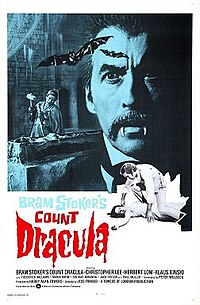
- Dracula
- Dracula in popular culture
- Tables of vampire traits
- Count Orlok
- Carmilla
- Varney the Vampire
- Vlad III the Impaler
- Elizabeth Báthory
- Mina Harker
- List of fictional vampires
- Alucard (Hellsing)
Notes
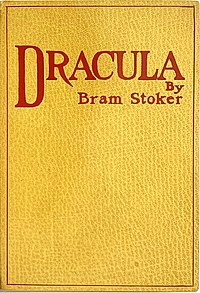
References
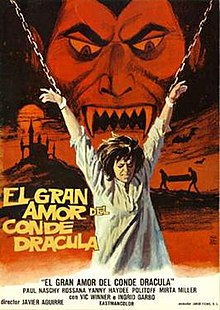
- Clive Leatherdale (1985) Dracula: the Novel and the Legend. Desert Island Books.
- Bram Stoker (1897) Dracula. Norton Critical Edition (1997) edited by Nina Auerbach and David J. Skal.
- Senf, Carol. Dracula: Between Tradition and Modernism (Twayne, 1998).
- Senf, Carol A. Bram Stoker. University of Wales Press, 2010.
External links

- Count Dracula at the Internet Movie Database
- Bram Stoker Online Full text, PDF and audio versions of Dracula.

